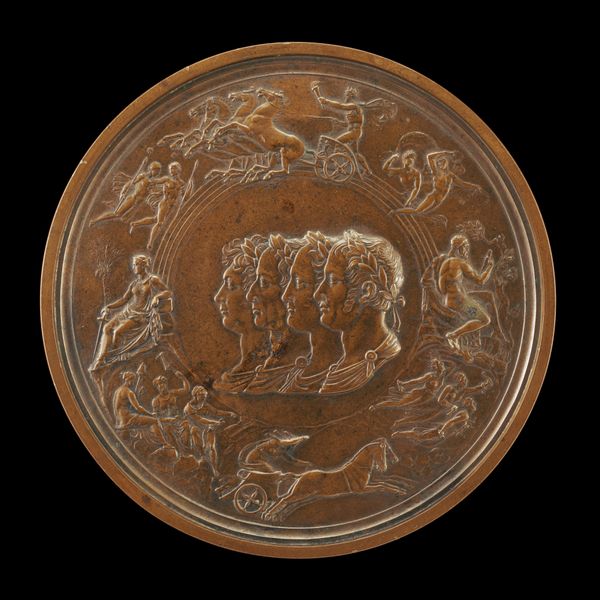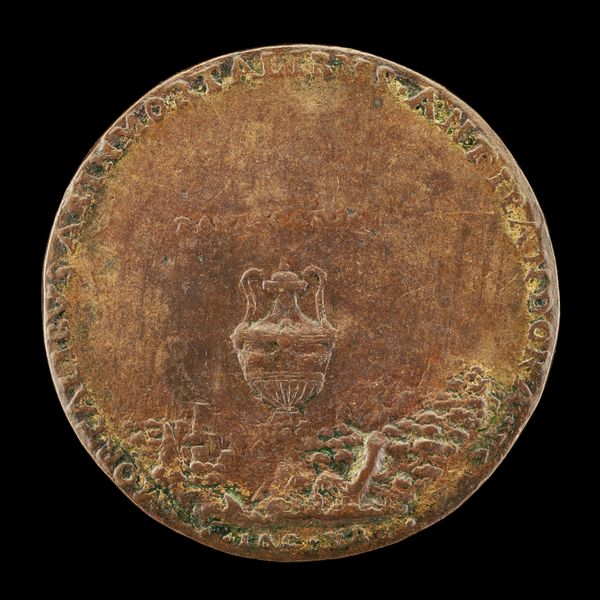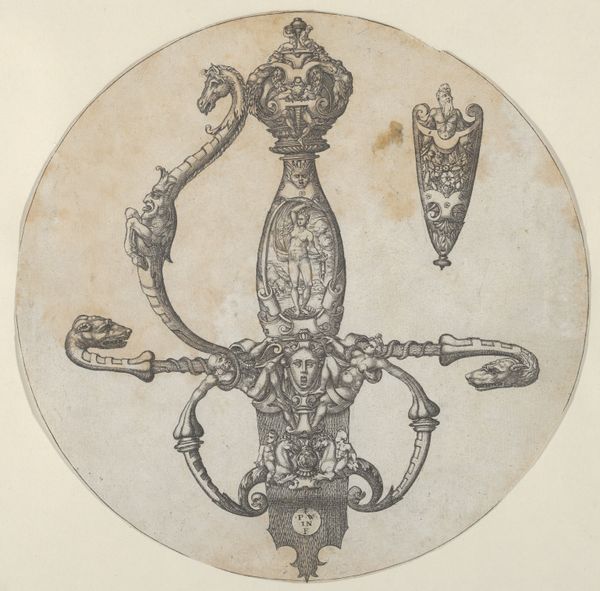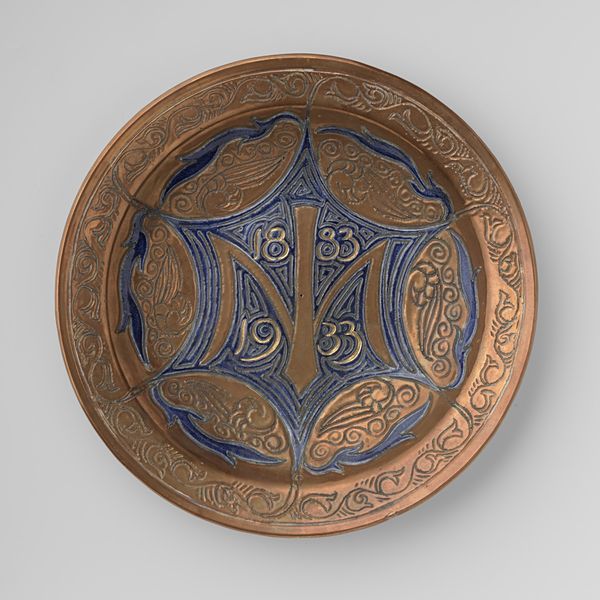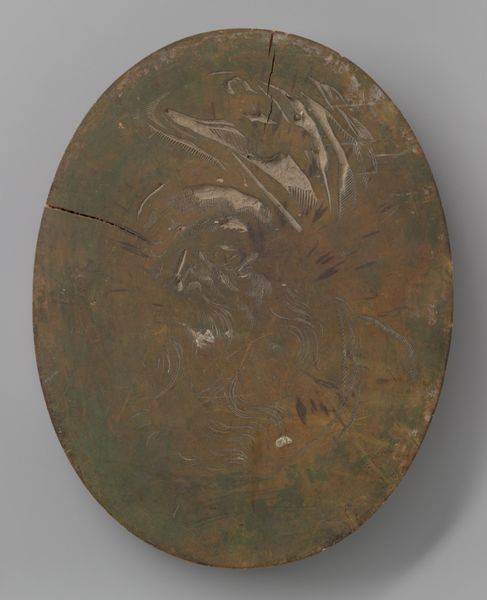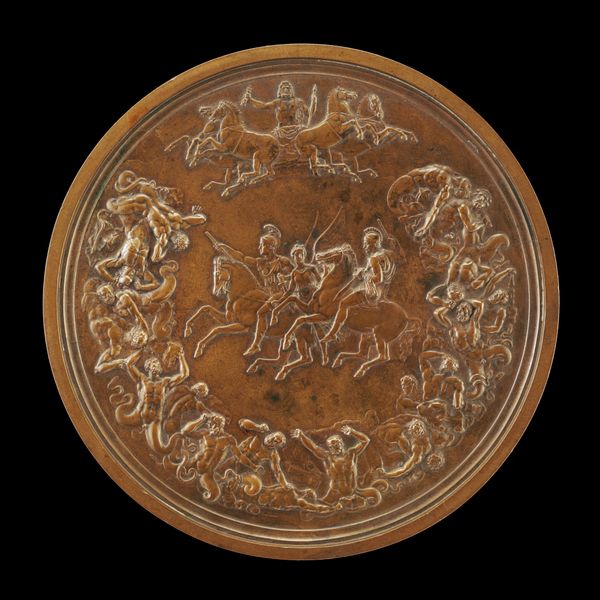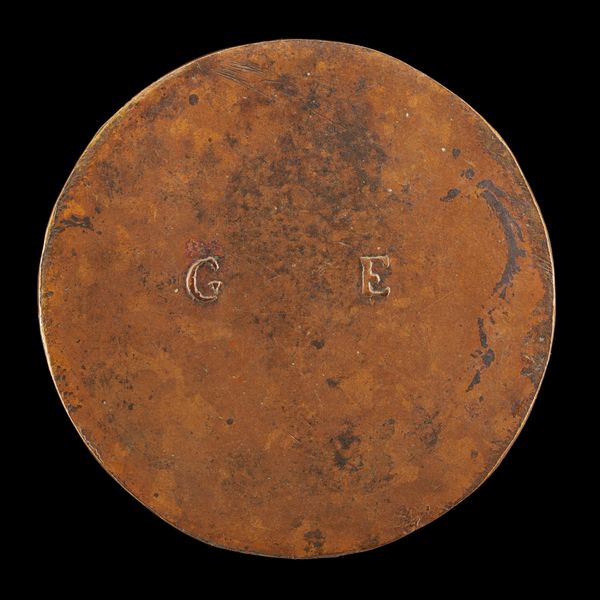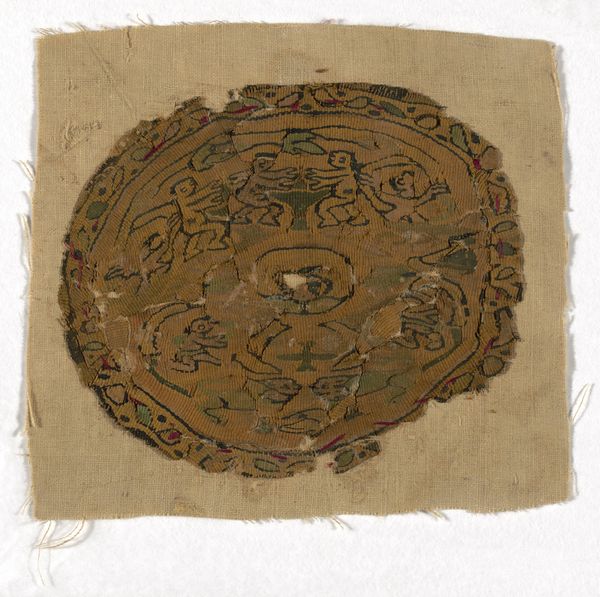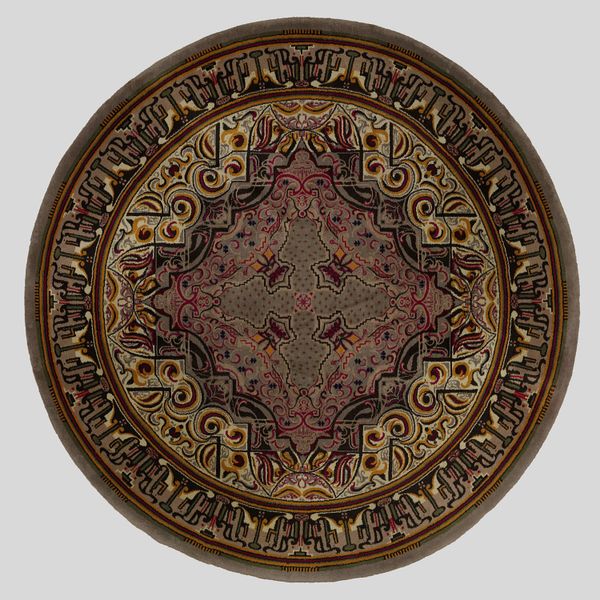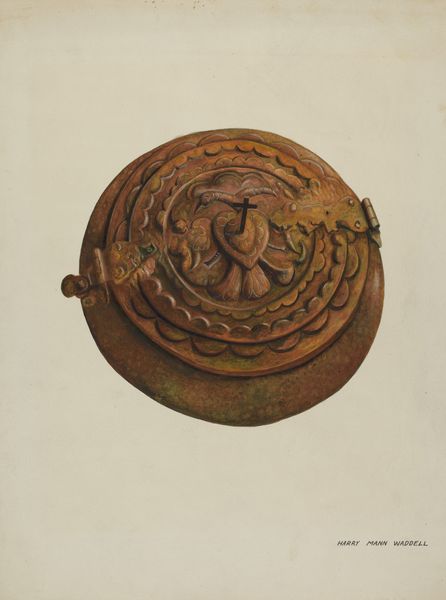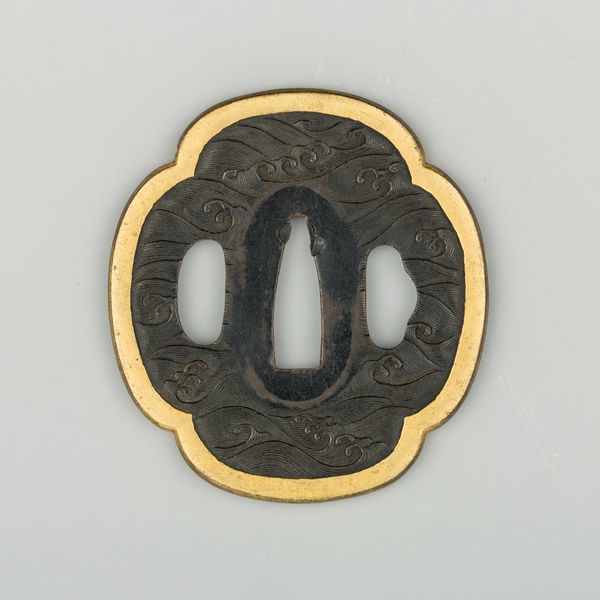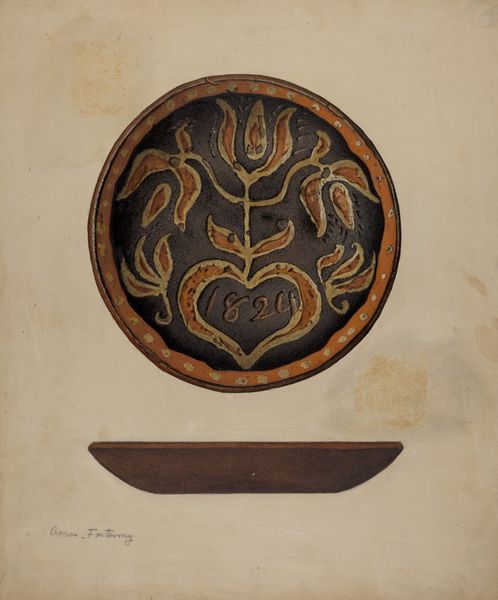
The Triumph of Fame; (reverse) Impresa of the Medici Family and Arms of the Medici and Tornabuoni Families
0:00
0:00
tempera, painting, wood
#
allegory
#
tempera
#
painting
#
geometric
#
wood
#
history-painting
#
italian-renaissance
Copyright: Public domain
Curator: Here we have an intriguing example of early Renaissance art, a tempera on wood panel attributed to Lo Scheggia. The piece is titled "The Triumph of Fame," also carrying the impresa of the Medici family, along with the arms of the Medici and Tornabuoni families. Editor: It’s deceptively simple, isn't it? There's a circular format with what appears to be familial heraldry painted over it in striking red and blues. I see geometric forms everywhere—almost aggressively symmetrical. The palette feels constrained, muted but it evokes the weight and the seriousness of the subject matter. Curator: Indeed. Let's delve deeper into the compositional elements. We have a circular field divided into symbolic zones with intertwined serpents and stylised feathers suggesting opulence. The composition cleverly integrates heraldic symbols reflecting the patron families of the Medici and Tornabuoni. Editor: But what did it *mean* to be Medici or Tornabuoni at that time? Surely more than family name is involved. As an allegory for the 'Triumph of Fame,' one can read this panel as a deliberate articulation of power relations. This wasn’t mere decoration; this object helped construct the idea of the families for a social and political function. It had work to do! Curator: An astute point. Looking at its structure reveals that each colour serves not just as a colour, but as a symbol in itself that evokes ideas. Note how the serpent twists in contrast to the vertical feathers suggesting complex societal relationships. Editor: Those snakes have forked tongues, and that feels right to mention. If this artwork embodies triumph, its rendering suggests how it has potentially come at another's expense, through deception and careful manoeuvring of wealth and influence. It’s a reminder that “fame” can come with costs. Curator: Absolutely. A modern viewer may initially be drawn to the somewhat abstracted forms of Renaissance symbolism but through this piece we gain unique access to their worldview and values. Editor: In essence, then, Lo Scheggia’s art challenges us to decode historical constructs, forcing us to confront the intertwined notions of success, representation, and the socio-political dimensions inherent in displays of grandeur. A powerful object indeed.
Comments
No comments
Be the first to comment and join the conversation on the ultimate creative platform.
